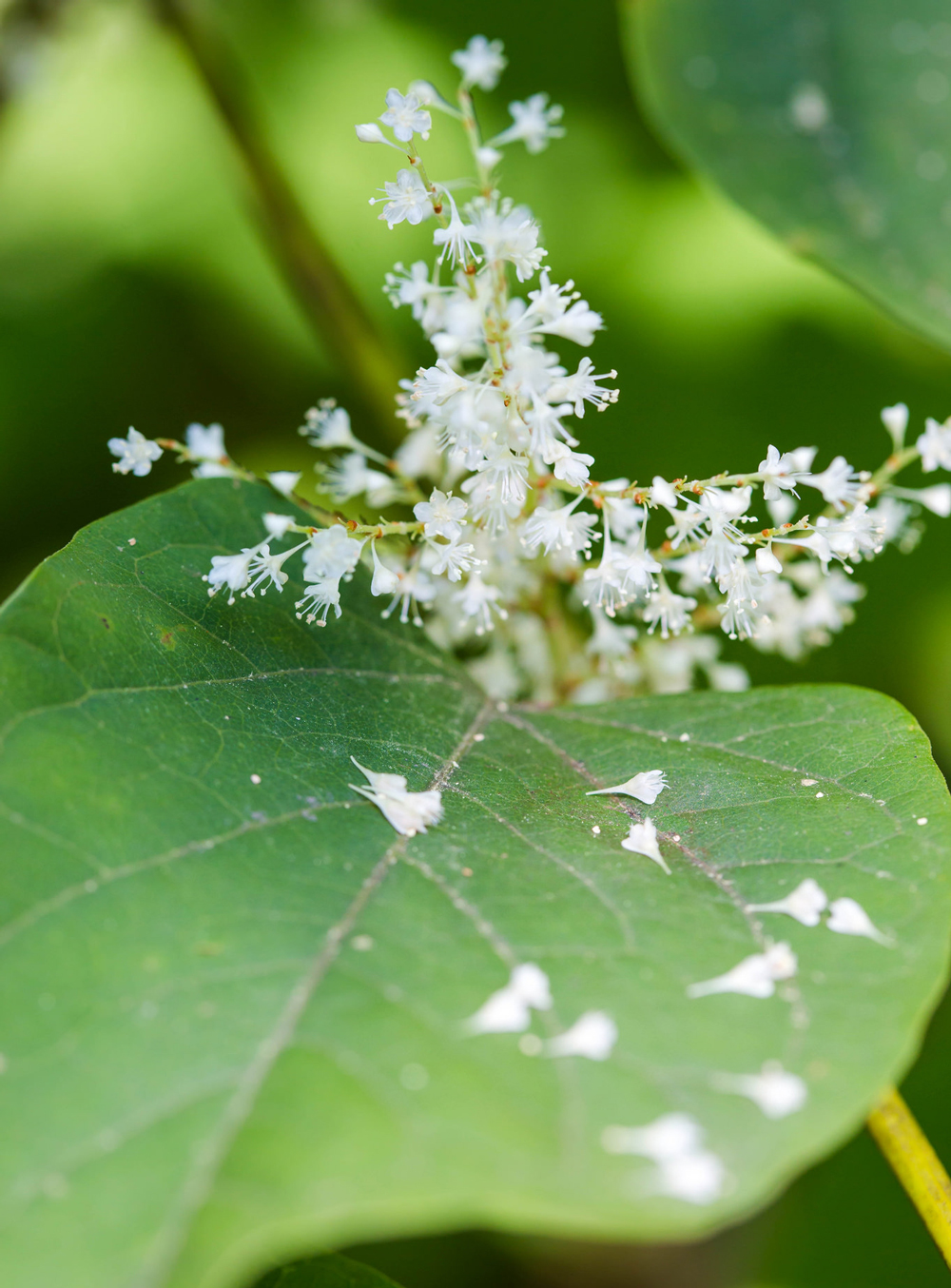Everything you need to know about Japanese knotweed
The pesky plant with wandering roots could be damaging your home and even stop you from selling your property. Here's our guide on how to detect and remove Japanese knotweed
Anyone who has had the misfortune of finding Japanese knotweed in their garden will not need us to explain what a bugbear this plant is. Not just for your garden, but also your home and any future moving plans you might have.
If you are lucky enough to have not heard of the fast-growing oriental plant, then we feel it's our duty to inform you. It can be such a menace to Great Britain's homeowners that even the government has got involved in 'weeding out' its presence from our shores. Below is our helpful Q and A on the felonious foliage.
Green-fingered? Jobs to do in the garden in October

What is Japanese knotweed?
Its botanical name is Fallopia japonica, which sounds pretty but do not be fooled. It is a highly invasive plant, which thrives around water sources such as ponds, canals and lakes, in large open spaces and – sadly for us – domestic gardens. It grows vigorously from year-to-year (‘perennial’) and it produces tall canes up to 3m (10ft) high during summer. It also has a lot going on underground with a wide-ranging root system, which can extend up to 3m in depth and 7m in all directions. These roots can pose a serious threat to construction works and have devastating consequences to building foundations and drains.
Where does it come from?
Obviously, from the name, it originates from Japan and is also native to China and Korea. It was introduced into British gardens way back in the 1940s as an ornamental garden plant for upmarket and high-society homes. It went onto become mainstream by the late 19th-century and also farmers used it to feed cattle. But by the 1930s it was clear this was no ordinary ornamental plant; it had broken out into the wild and was so intense it was beginning to reduce house prices in the West Country.
What does it look like?

It has young red buds at the base of the plant at the beginning of the year which develop into shoots (also reddish in appearance). Shoots grow into hollow canes which look like Bamboo but are green with distinctive purple flecks. Its leaves are shovel-shaped, large and become a lush green during summer. In autumn it grows clusters of small white flowers.
Leaves you will want in your garden: How to grow lettuce: salad leaves to serve up this summer
Sign up to our newsletter for style inspiration, real homes, project and garden advice and shopping know-how
How fast does it grow?
It can grow at a rate of more than a yard per week. The damage caused by its roots and stems costs the economy millions every year in weed control and property devaluation.
Why don't you want it growing in your garden?
This plant is so determined to live and spread that trimming it back with a simple strimmer actually encourages it to grow stronger and faster. Japanese knotweed is also a great survivor, even when dried or composted, its crown will produce new canes if it comes into contact with soil or water – just like Gremlins and just as evil.
The strong expansive roots can pose a serious threat to construction works and have devastating consequences on your property.
How will detecting it affect the sale or purchase of a property?

If picked up at survey stage, mortgage lenders can refuse to lend against properties with knotweed. This is due to current or imminent damage it could cause to foundations, drainage systems and walls, and this can prove to be a difficult situation for all parties, especially if you are in a house-buying chain. The thought of Japanese knotweed can be so daunting to prospective buyers, it could devalue your property by up to 50 per cent – eek!
How can I get rid of Japanese knotweed?
This is the big problem – it is so hard to eradicate. You may think you've killed it with hardcore weed-killer, but according to the Environment Agency (EA), rhizomes can remain dormant in the ground for as long as 20 years. That means there's every chance of it returning if further treatment is not carried out. You can however spray, or inject, herbicides into its stem, but this is costly and it takes six months, so you'll have to be patient.
There are a number professional companies and contractors (some are mortgage compliant and Property Care Association (PCA) approved) who promise to eradicate the invasive weed with eco-solutions as well as industrial strength chemicals.
More advice: How to look after your gutters
What is the government doing to sleigh the beast?
Japanese knotweed is deemed a hazardous waste under the Hazardous Waste Regulations 2005 (HWR 2005). For further information, you can visit the dedicated Japanese knotweed Gov.uk guidance web page
There is a code of practice you must follow to dispose of it or you could be issued with an Antisocial Behaviour Order (that's an ASBO), face fines of up to £5000 or even up to two years in prison if you allow contaminated soil or plant material from any waste you transfer to spread into the wild.
Rachel Homer has been in the interiors publishing industry for over 15 years. Starting as a Style Assistant on Inspirations Magazine, she has since worked for some of the UK’s leading interiors magazines and websites. After starting a family, she moved from being a content editor at Idealhome.co.uk to be a digital freelancer and hasn’t looked back.